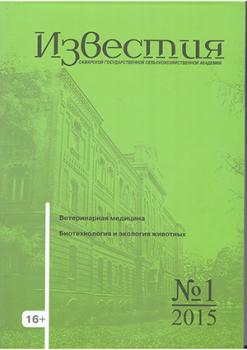Samara, Russian Federation
Samara, Russian Federation
Samara, Russian Federation
The purpose is to justify the use of minimum and zero tillage in conditions of forest-steppe Zavolzhye region from the position of the biological activity of the soil. One of the factors forming and determining the fertility of the soil, is the activity of microorganisms that inhabit it, the active surface which reaches up to several hundred acres for 1 ha of surface topsoil. Important role in building of soil fertility is the number of major groups of microorganisms, which, being the catalysts of metabolism, objectively reflect the nature of biochemical processes. Another academician S. P. Kostychev (1937) pointed out that without the study of biodynamics the knowledge of the soil, especially from the agronomic point of view, may not be complete. Microorganisms occupy a key position in maintaining biochemical capacity of the soil, so monitoring of soil microflora is essential for the maintenance and reproduction of its fertility. This work is devoted to studying the role of soil microorganisms in the process of maintaining and reproduction of soil fertility in the development of new technologies in agriculture. The article presents data on the effect of basic tillage on the number of different groups of soil microorganisms (micromycetes, bacteria, actinomycetes), Shows the number of soil microorganisms, such as micromycetes (mold fungi) and bacteria are significantly influenced by seasonal changes in temperature and humidity than the soil treatment methods. From which it follows that the reduction of the mechanical load on the soil in the forest-steppe of Zavolzhye a significant impact on the number of major groups of microorganisms has not.
microorganisms, micromycetes, bacteria, actinomycetes
1. Markovskij, A. A. Minimizing soil cultivation in forest-steppe of Zavolzhye / A. A. Markovskij, G. K. Markovskaya, Yu. V. Stepanova // Collection of articles of International scientific-practical conference. - Saratov. - 2013. - P. 194-198.
2. Kovalenko, M. V. The Influence of various ways of the basic processing for the biological activity of the soil when cultivated of spring wheat in conditions of forest-steppe Zavolzhye / M. V. Kovalenko, E. A. Tretyakova // Young scientists in solving actual problems of science : materials of international scientific-practical conference. - Troitsk : South Ural SAU. - 2015. - P. 195-198.
3. Kovalenko, M. V. Effect of methods of main soil tillage for the enzymatic activity / M. V. Kovalenko, G. K. Markovskaya // Bulletin of Kazan SAU. - 2013. - №1(27). - P. 108-111.
4. Bogomazov, S. V. The Effectiveness of resource-saving methods of cultivation of winter wheat in forest-steppe of the Middle Volga region / S. V. Bogomazov, A. G. Kozmin // Niva Povolzhya. - 2014. - №4. - P. 12-19.
5. Kovalenko, M. V. Influence of primary tillage for its biological activity and yield of sunflower in the forest-steppe of TRANS-Volga region // Abstracts of the international scientific-practical conference. - Ufa : NTV «Bashinkom». - 2011. - Р. 261-265.
6. Markovskaya, G. K. Comparative study of different methods of basic tillage and their influence for the microbiota of the soil on crops of winter wheat in conditions of forest-steppe of the Middle Volga / G. K. Markovskaya, Yu. V. Stepanova // Bulletin of the Ulyanovsk state agricultural Academy. - 2011. - №4. - P. 32-37.
7. Naumov, D. V. The Activity of microorganisms, depending on the system content of the soil in irrigated garden / D. V. Naumov, F. N. Rykalin // Bulletin of the Samara state agricultural academy. - 2010. - №4. - P. 72-78.
8. Bogomazov, S. V. The Role of agronomic practices in the cultivation of winter wheat in the conditions of Chernozem soils of the Middle Volga region / S. V. Bogomazov , O. A. Tkachuk, E. V. Pavlikova, A. G. Cochin // Niva Povolzhya. - 2014. - №2(31). - P. 2-8.





